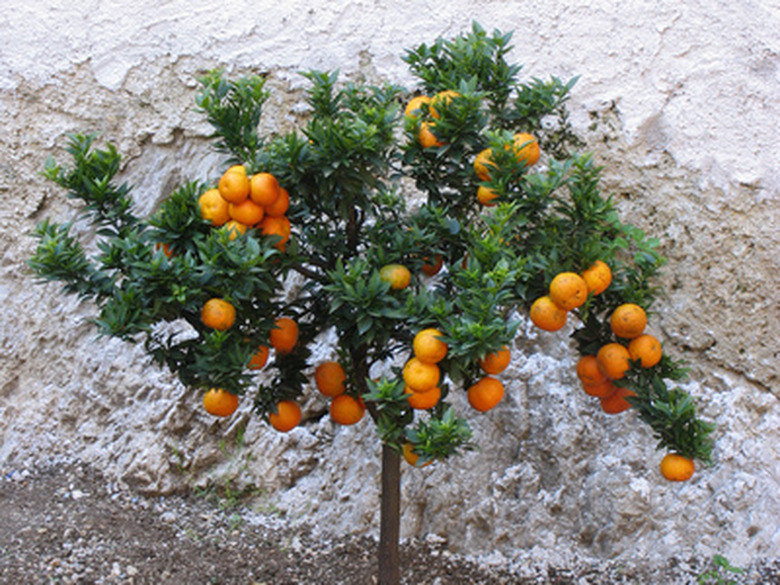How To Stop Suckers On Citrus Trees
Pruning a citrus tree is a major task, but one that needs doing regularly to prevent lopsided growth and to encourage the best possible fruit growth. Suckers, also known as shoots or water sprouts, show up on the trunk and large limbs of a citrus tree. Suckers from the rootstock area can often be identified by their different-looking foliage. Removal of suckers is important, since they steal resources from the main plant. Few or no tools are needed for the job.
Step 1
Break sprouts off the trunk by hand when they are young, recommends the Arizona Cooperative Extension. Breaking suckers from the tree deters regrowth and does not hurt the main trunk.
- Pruning a citrus tree is a major task, but one that needs doing regularly to prevent lopsided growth and to encourage the best possible fruit growth.
Step 2
Cut off larger suckers with a sharp pair of pruning shears. Make a smooth cut as close to the collar, the small bump where the sucker originates, as possible.
Step 3
Cut down any shoots that emerge from the soil surrounding the citrus tree, recommends the Arizona Cooperative Extension. They will compete with the parent tree for water and nutrients.
Step 4
Wrap a collar of white cardboard, secured with tape, around the lowest 10 to 12 inches of the tree trunk to inhibit growth of suckers in this vulnerable area. Cardboard blocks sunlight and prevents growth of suckers from the rootstock.
Suckers On Fruit Trees?
The small, green sprouts you find growing along the base of your fruit trees are commonly called "suckers." While this may seem like an ideal way to get more free fruit trees on your property, suckers most likely aren't going to turn into the type of tree you planted. Most fruit trees and many ornamental shrubs and trees are grafted. This process refers to taking a rootstock and surgically attaching the type of fruit tree you want to it. Suckers growing below the graft line or from the roots are baby versions of the rootstock, not the type of tree grafted to it. Be wary of using herbicides as they may travel to the root of the tree and cause damage or death. Water sprouts are sometimes called suckers, although they are much different from the suckers found along the base of the tree. Water sprouts typically appear on branches and are typically a sign of stress such as root damage, topping, disease, drought or bad pruning.
- Cut off larger suckers with a sharp pair of pruning shears.
- Suckers growing below the graft line or from the roots are baby versions of the rootstock, not the type of tree grafted to it.
Things Needed
- Pruning shears
- Work gloves
- White cardboard
- Tape
Tip
Do not use any pruning paint on sucker wounds. They will heal on their own, according to the Arizona Cooperative Extension. As the tree grows larger, suckers will appear less frequently.
